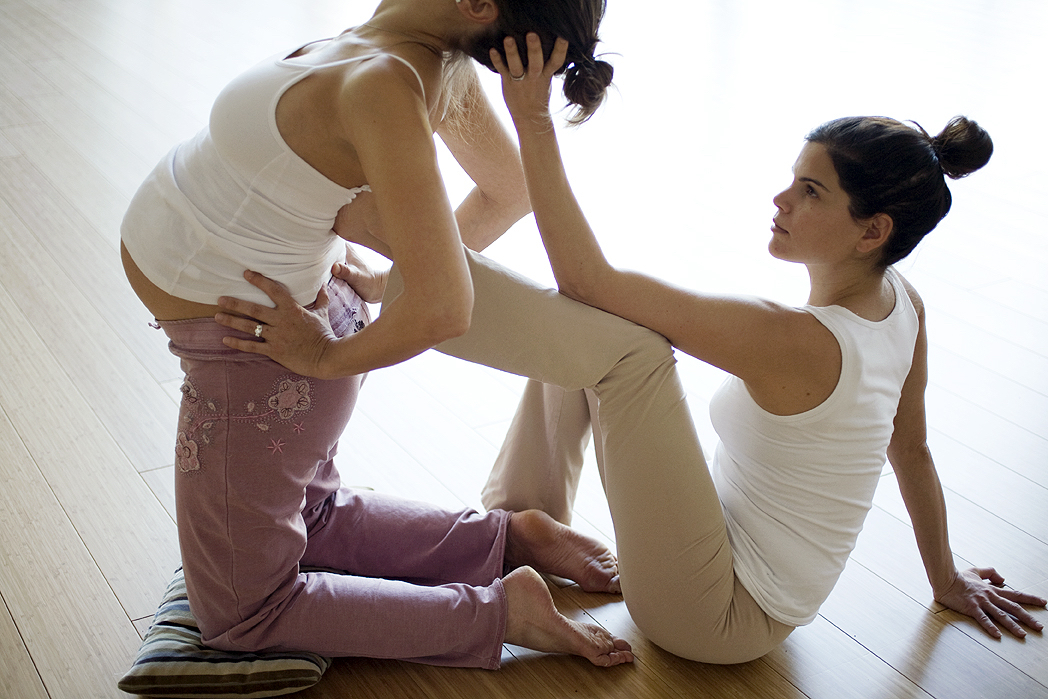Prenatal Yoga
Yoga is a wonderful way to create comfort and ease during pregnancy and also to foster the healthy growth of both the baby and mother.
> Click here to view a prenatal yoga sequence.
Practicing yoga safely during your pregnancy
There are varying opinions on how to practice yoga safely during pregnancy and certainly one should always consult their physician to find out what the precautions are specific to the expecting mother. The general rule is usually that a woman can continue with movements that she is accustomed to practicing before pregnancy (some may need to be modified) and not to take on any new challenging poses during pregnancy. Also, it’s important to be aware of any other pre-existing physical limitations. Not one yoga practice will suit all pregnant women. Each woman must work according to her conditions. For most women, they may find that they can do most yoga without much modifcation during the first 17 weeks of pregnancy. See below for modifications and precautions.
Poses/actions to be cautious with during pregnancy
As the belly grows you will notice movements such as lowering to a push up or standing up from bending forward can be more challenging- modify to use leg strength to support a healthy spine. Many women find it difficult to part with their abdominal exercises. Consider pregnancy as a 40 week abdominal exercise. There certainly is no need to try and flatten or tone the tummy. Your belly is the home where you baby is growing, give it space to grow and feel nourished.
- Avoid poses lying directly on the belly. Alternatives to being on the belly: Resting: use child’s pose or polar bear instead. Back Strengtheners: get on your hands and knees extend one leg and opposite arm.
- Avoid twists that cause legs or arms to press against belly. Twisting can be a great relief for an aching upper back however being mindful to create space for the belly. Twist gently and keep belly open. The emphasis should be on shoulders and upper back.
- Keep the legs open in forward bends (standing and seated) to create space for the belly.
- Back bending – it is advisable to modify and use gentle back bends in order to not over stretch the already expanding abdominal muscles. Each woman is different in her abilities, don’t try to go deeper in a backbend than you would normally go in your regular practice. Additionally, as the baby grows, the back is in a more vulnerable (swayback, lordosis) position and deeper backbends could causes more pressure on low back.
Pregnant womenwill also feel a lot of tightness in the psoas (hip flexor area) which will make backbending more difficult. - Inversions – inexperienced yoga practicioners should avoid inversions during pregnancy. Experienced practitioners may choose to continue with inversions such as head stand or hand stand till the 7th month (some maybe longer) but this is generally only advised for very advanced practitioners.
- As the pregnancy progresses the body releases the hormone ‘relaxin’ to loosen the ligaments of the hips. Women may feel vulnerable in this area and should be cautious not to overstretch when doing poses that involve opening the hip area ie. deep lunges, splits, pigeon etc- go to only 80% of your maximum to be safe.
Prenatal photos courtesy of Kim Lowe.


